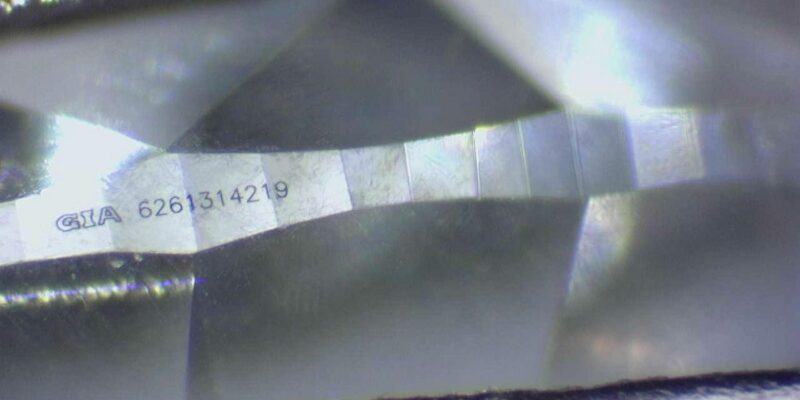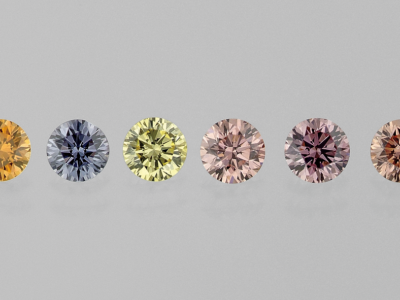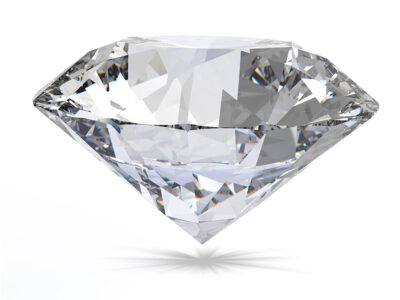Diamonds are precious gemstones that carry immense value and are often subjected to theft and fraud. To combat this, diamonds are assigned unique serial numbers for identification and tracking purposes.
In this article, we will explore the significance of diamond serial numbers and how they contribute to the integrity of the diamond industry.
Table of Contents
Do Diamonds Have Serial Numbers?
Diamond serial numbers are unique identification codes assigned to individual diamonds. These numbers are engraved or laser-inscribed on the girdle of the diamond, allowing for easy tracking and identification.
Importance of Diamond Identification
Diamond identification is of utmost importance in the diamond industry. It ensures the authenticity, quality, and origin of a diamond.
Serial numbers play a crucial role in tracking and verifying the legitimacy of diamonds, providing peace of mind to consumers and promoting ethical sourcing practices.
GIA Diamond Report
The GIA Diamond Report is a comprehensive document issued by the Gemological Institute of America (GIA) that provides detailed information about the characteristics and quality of a diamond.
What is a GIA Diamond Report
A GIA Diamond Report is a comprehensive document issued by the Gemological Institute of America that provides detailed information and grading analysis of a diamond’s quality, including its 4Cs (cut, color, clarity, and carat weight). It also includes a plotted diagram of the diamond’s clarity characteristics and the diamond’s unique GIA report number for identification.
Understanding the information on the report
The GIA Diamond Report provides essential information about a diamond’s quality. It includes details on the 4Cs, a plotted diagram of clarity characteristics, and a unique GIA report number for identification purposes.
Laser Inscriptions
Laser inscriptions: Laser inscriptions are a method used to engrave a unique serial number or other identification markings on the girdle of a diamond.
This process is done by using a laser beam to create a microscopic inscription, which allows for easy identification and tracing of the diamond. Laser inscriptions can include the diamond’s certificate number, logo, or any other specific information required by the owner.
This provides an additional layer of security and helps to prevent fraud or confusion regarding the diamond’s identity. Additionally, laser inscriptions are invisible to the naked eye and do not affect the diamond’s overall appearance or quality.
How diamonds are inscribed with serial numbers
Diamonds are inscribed with serial numbers using a laser beam. The laser creates a microscopic engraving on the diamond’s girdle, which contains unique identification markings such as the diamond’s certificate number or logo.
Benefits of laser inscriptions for identification
Laser inscriptions on diamonds provide a permanent and tamper-proof form of identification. They allow for easy verification of a diamond’s authenticity, origin, and ownership, providing peace of mind for buyers and sellers in the diamond industry. The laser inscriptions also serve as an additional layer of security against theft and fraud.
Conflict-Free Diamonds
Conflict-Free Diamonds: The section on conflict-free diamonds explains why ethical sourcing is crucial for diamond identification. It discusses the importance of verifying the origin of a diamond using serial numbers.
Why ethical sourcing matters for diamond identification
Ethical sourcing matters for diamond identification because it ensures that the diamonds are obtained through responsible and sustainable practices. This helps to prevent the sale of conflict diamonds and supports the industry’s efforts towards transparency and accountability. By verifying the origin of a diamond using serial numbers, consumers can have confidence in their purchase and contribute to a more ethical diamond industry.
How to verify the origin of a diamond using serial numbers
To verify the origin of a diamond using serial numbers, consumers can refer to the certification provided by reputable organizations like the Gemological Institute of America (GIA). The GIA Diamond Report includes the unique serial number of the diamond, allowing buyers to cross-check the information with the diamond’s history and ensure its authenticity.
Other Identification Methods
Other methods for identifying diamonds include using microscopes, ultraviolet (UV) light, and other gemological tools to examine the diamond’s characteristics such as inclusions, fluorescence, and color. These methods can provide additional information for verifying a diamond’s origin and authenticity. However, serial numbers remain the most reliable and easily verifiable method for diamond identification.
Alternative methods for diamond identification
Alternative methods for diamond identification include using microscopes, ultraviolet (UV) light, and other gemological tools to examine characteristics such as inclusions, fluorescence, and color. These methods can provide additional information for verifying a diamond’s origin and authenticity. However, serial numbers remain the most reliable and easily verifiable method for diamond identification.
Comparison of serial numbers to other tracking methods
When comparing serial numbers to other tracking methods for diamond identification, serial numbers stand out as the most reliable and easily verifiable. Other methods such as microscopes, UV light, and gemological tools can provide additional information but may not offer the same level of accuracy and confidence as serial numbers.
Conclusion
In conclusion, diamond serial numbers are an essential tool for reliable and accurate diamond identification.
They provide a unique and easily verifiable way to track a diamond’s origin and ensure its ethical sourcing. With laser inscriptions and GIA Diamond Reports, consumers can have confidence in the authenticity and quality of their diamonds.
Diamond serial numbers play a crucial role in diamond identification. They provide a unique and reliable way to track a diamond’s origin and ensure ethical sourcing. With laser inscriptions and GIA Diamond Reports, consumers can have confidence in the authenticity and quality of their diamonds.
In conclusion, diamond serial numbers serve as a critical tool for tracking a diamond’s origin and ensuring ethical sourcing. With the help of GIA
Diamond Reports and laser inscriptions, consumers can have confidence in the authenticity and quality of their diamonds. These identification practices are essential in promoting transparency and trust within the diamond industry.







Comments